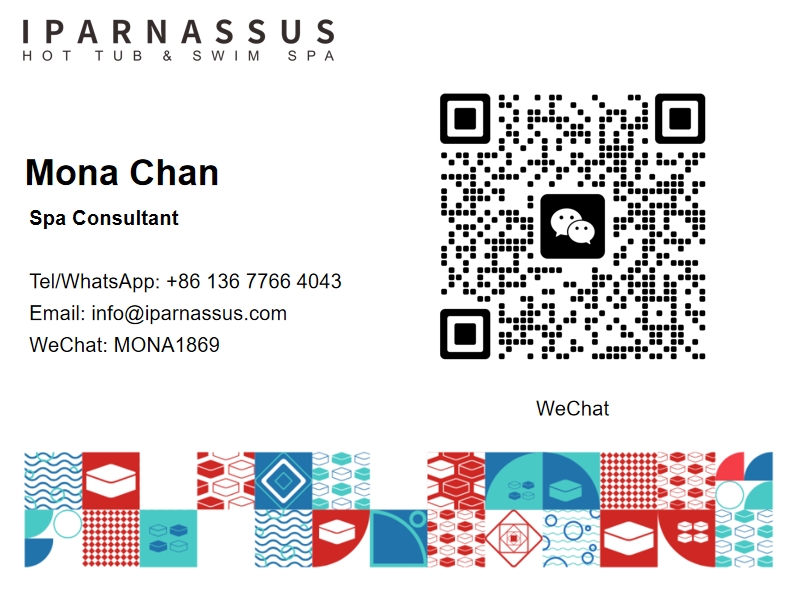Is High Bromine in Hot Tub Dangerous?
2024-08-09 17:46:33
Hot tubs are a popular amenity in hotels and resorts, offering relaxation and therapeutic benefits to guests. However, maintaining proper water chemistry is crucial for ensuring a safe and enjoyable experience. One common sanitizer used in hot tubs is bromine, which effectively kills bacteria and other harmful microorganisms. But what happens when bromine levels become too high? Is high bromine in a hot tub dangerous? This blog post will explore the potential risks associated with elevated bromine levels and provide insights into proper hot tub maintenance, with a focus on hotel hot tubs.
How Often Should You Change the Water in a Hotel Hot Tub?
Maintaining clean and safe water in a hotel hot tub is essential for guest health and comfort. The frequency of water changes depends on various factors, including usage, water quality, and maintenance practices. Generally, hotel hot tubs require more frequent water changes than residential ones due to higher use and turnover rates.
Industry standards recommend changing hot tub water every 3-4 months for residential use. However, for hotel hot tubs, this timeframe is significantly shorter. Many experts suggest changing the water in hotel hot tubs every 2-4 weeks, depending on usage and occupancy rates. Some high-traffic hotels may even opt for weekly water changes to ensure optimal cleanliness and safety.
Several factors influence the need for water changes:
1. Bather load: The more people use the hot tub, the faster the water quality deteriorates. Hotels with high occupancy rates and popular hot tub amenities may need more frequent water changes.
2. Chemical balance: Maintaining proper chemical levels, including bromine, becomes increasingly difficult as organic matter accumulates in the water. Regular testing and adjustment of chemical levels can extend the time between water changes, but eventually, a complete change is necessary.
3. Total Dissolved Solids (TDS): As water evaporates and chemicals are added, the concentration of dissolved solids increases. High TDS levels can affect water clarity, chemical efficiency, and overall hot tub performance.
4. Biofilm buildup: Over time, bacteria can form a protective layer called biofilm on surfaces within the hot tub system. This biofilm can harbor harmful microorganisms and is difficult to eliminate without a complete water change and thorough cleaning.
To maintain water quality between changes, hotel staff should perform daily maintenance tasks, including:
- Testing and adjusting chemical levels, including bromine
- Cleaning the filter
- Checking and cleaning the skimmer basket
- Wiping down surfaces to remove any visible debris or scum lines
Additionally, implementing a shock treatment weekly or bi-weekly can help maintain water quality and extend the time between full water changes. However, it's crucial to note that shock treatments are not a substitute for regular water changes.
Hotels should also educate guests on proper hot tub etiquette, such as showering before entering the hot tub and avoiding the use of oils or lotions, which can contribute to water contamination. By combining regular maintenance, appropriate water change schedules, and guest education, hotels can ensure a safe and enjoyable hot tub experience for their patrons.
Can You Get an STD from a Hotel Hot Tub?
The question of whether one can contract a sexually transmitted disease (STD) from a hotel hot tub is a common concern among travelers. While the risk of contracting an STD from a properly maintained hot tub is extremely low, it's essential to understand the facts and take necessary precautions.
First and foremost, it's important to clarify that most STDs are primarily transmitted through direct sexual contact or the exchange of bodily fluids. The hot water and sanitizing chemicals used in hot tubs, such as bromine or chlorine, are designed to kill most harmful bacteria and viruses, including those that cause STDs.
However, there are a few considerations to keep in mind:
1. Improper maintenance: If a hotel hot tub is not properly maintained or sanitized, it could potentially harbor harmful microorganisms. While most of these would not be STD-causing pathogens, they could lead to other infections or skin irritations.
2. Survival of certain pathogens: Some STD-causing organisms, like the herpes simplex virus, can potentially survive for short periods in warm water. However, the presence of sanitizing chemicals significantly reduces this risk.
3. Direct contact: In extremely rare cases, if someone with an active STD were to use the hot tub immediately before you and there was direct skin-to-skin contact or contact with fresh bodily fluids, there could be a minimal risk of transmission.
4. Non-STD infections: While not STDs, other infections such as hot tub folliculitis (caused by the Pseudomonas aeruginosa bacteria) can be contracted from poorly maintained hot tubs.
To minimize any potential risks, consider the following precautions:
- Observe the hot tub before entering. The water should be clear, and there should be no strong, unpleasant odors.
- Avoid swallowing hot tub water or submerging your head.
- Shower before and after using the hot tub to rinse off any potential contaminants.
- If you have any open cuts or sores, it's best to avoid hot tub use until they've healed.
- Limit your time in the hot tub to reduce exposure to any potential pathogens.
- If you notice any signs of skin irritation or infection after using a hot tub, consult a healthcare professional.
It's worth noting that reputable hotels and resorts typically maintain their hot tubs to high standards, regularly testing and adjusting chemical levels, including bromine, to ensure guest safety. If you have concerns about the cleanliness or maintenance of a hotel hot tub, don't hesitate to ask staff about their maintenance procedures or opt for alternative relaxation methods during your stay.
What Happens if You Stay in a Hot Tub Too Long?
While soaking in a Hotel Hot Tub can be a relaxing and enjoyable experience, spending too much time in one can lead to various health risks. Understanding these potential dangers is crucial for hotel guests and hot tub users in general. Let's explore what can happen if you overstay your welcome in a hot tub.
1. Dehydration: The high water temperature in hot tubs (typically around 100-104°F or 38-40°C) causes increased sweating, even though you're surrounded by water. This can lead to rapid dehydration if you don't replenish fluids. Symptoms of dehydration include dizziness, headache, and fatigue.
2. Overheating (Hyperthermia): Prolonged exposure to high temperatures can raise your body temperature to dangerous levels, leading to heat exhaustion or, in severe cases, heat stroke. Symptoms may include nausea, dizziness, rapid heartbeat, and in extreme cases, loss of consciousness.
3. Skin irritation: Extended time in hot water can cause your skin to become wrinkled and pruned. More importantly, it can lead to skin irritation or rashes, especially if bromine or chlorine levels are high. Some people may experience hot tub folliculitis, a skin infection caused by bacteria thriving in warm, wet environments.
4. Increased risk of infection: While sanitizers like bromine help kill harmful microorganisms, prolonged exposure to water can still increase your risk of infections, particularly in areas like the ears, eyes, and genitals.
5. Cardiovascular stress: The heat from the hot tub causes your blood vessels to dilate, lowering your blood pressure. For some people, especially those with pre-existing heart conditions, this can put additional stress on the cardiovascular system.
6. Pregnancy risks: Pregnant women are advised to limit hot tub use or avoid it altogether, as prolonged exposure to high temperatures can potentially harm fetal development, especially in the first trimester.
7. Interference with medications: Some medications can be affected by prolonged heat exposure, either becoming less effective or causing adverse reactions when combined with hot tub use.
To enjoy hot tubs safely, consider the following guidelines:
- Limit your soak time to 15-30 minutes at a time.
- Stay hydrated by drinking water before, during, and after hot tub use.
- Exit the hot tub immediately if you feel dizzy, nauseous, or uncomfortably hot.
- Be aware of any personal health conditions that might be exacerbated by hot tub use.
- Pregnant women, young children, and individuals with certain health conditions should consult a doctor before using hot tubs.
Hotel staff should be trained to educate guests on safe hot tub use, including posting visible signage with usage guidelines and potential risks. Regular monitoring of chemical levels, including bromine, is crucial to maintain a safe environment and minimize the risk of skin irritation or infections.
In conclusion, while Hotel Hot Tubs can offer numerous benefits, it's essential to use them responsibly and in moderation. By understanding the potential risks of prolonged hot tub use and following safety guidelines, hotel guests can enjoy this amenity without compromising their health and well-being.
If you want to get more information about this product, you can contact us at info@iparnassus.com!
References:
1. Centers for Disease Control and Prevention. (2022). Healthy Swimming/Recreational Water.
2. Association of Pool & Spa Professionals. (2021). Hot Tub Maintenance and Operation.
3. World Health Organization. (2023). Guidelines for Safe Recreational Water Environments.
4. Journal of the American Academy of Dermatology. (2020). Hot tub folliculitis: An update.
5. American Heart Association. (2022). Hot Tub Safety for Heart Patients.
6. Environmental Protection Agency. (2023). Recreational Water Quality Criteria.
7. National Swimming Pool Foundation. (2021). Pool & Hot Tub Alliance Resource Center.
8. International Journal of Environmental Research and Public Health. (2019). Health Effects of Recreational Water Use.
9. American College of Obstetricians and Gynecologists. (2022). Hot Tub Use During Pregnancy.
10. Journal of Environmental Health. (2021). Microbial Safety of Public Hot Tubs.



